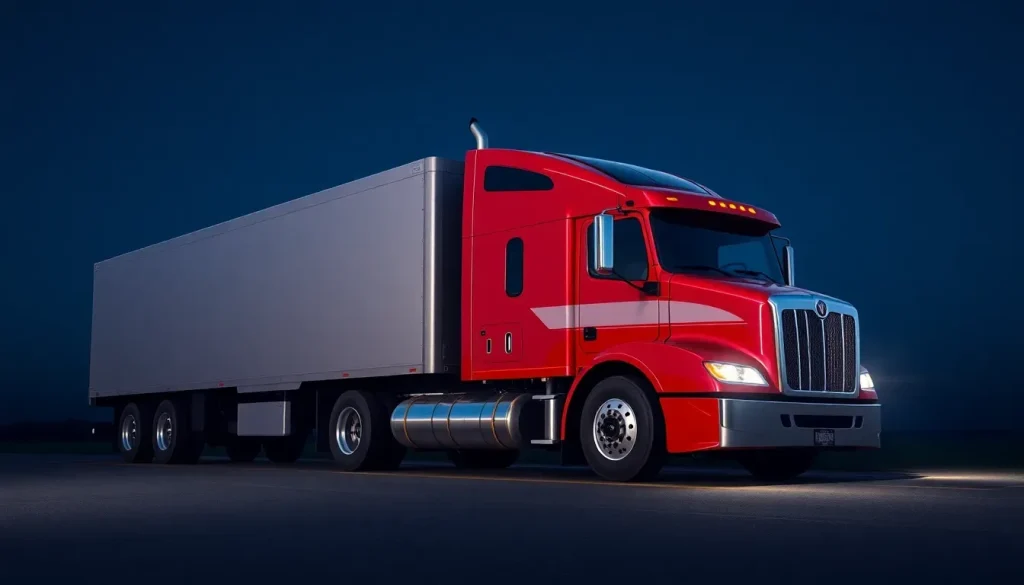Trump imposes 25% tariff on complete trucks

In a bold move that could significantly reshape the landscape of the heavy truck industry, U.S. President Donald Trump recently announced a hefty 25% tariff on complete trucks manufactured outside the United States. This decision, set to take effect on October 1, 2025, raises questions about its potential impact on both domestic manufacturers and consumers alike.
Trump justified this tariff through a post on his Truth Social platform, emphasizing the necessity to protect American truck manufacturers from unfair foreign competition. He specifically mentioned notable companies like Peterbilt, Kenworth, Freightliner, and Mack Trucks, asserting that the tariff would ensure their continued success and sustainability in the market, which he deems vital for national security.
Understanding the Context of Truck Tariffs
The heavy truck market plays a crucial role in the U.S. economy. It involves not just the manufacturing of trucks but a complex supply chain that includes numerous components sourced from various parts of the world. The implementation of tariffs is often framed as a strategy to bolster local industries, but it can lead to increased costs for businesses and consumers.
Historically, tariffs have been a tool for protecting domestic industries by making imported goods more expensive. In this case, the 25% tariff is particularly significant because it comes at a time when the trucking industry is grappling with rising operational costs and fluctuating freight volumes. The impact of these tariffs may extend beyond just the manufacturers, potentially affecting:
- Truck buyers facing higher prices
- Supply chain dynamics for components
- Overall market competition
Current Industry Reactions
The response from industry stakeholders has been mixed, with some expressing support for the initiative and others warning of potential downsides. For example, Volvo's president, Peter Voorhoeve, has publicly stated that the current tariff policy puts them at a disadvantage, particularly since they face tariffs on imported components while complete trucks built in Mexico remain tariff-free under the USMCA.
In an exclusive interview, Voorhoeve elucidated how his company is affected by the tariff structure, noting that despite efforts to compete, the uneven playing field complicates their operations. Similarly, Paccar, the parent company of Peterbilt and Kenworth, confirmed that the majority of its trucks are manufactured in the U.S. Following Trump's announcement, Paccar's shares reportedly surged 6% in pre-market trading, indicating investor optimism about the protective measures.
Concerns from the American Trucking Associations
Amidst the excitement from some manufacturers, the American Trucking Associations (ATA) voiced strong opposition to the newly announced tariffs. In a letter to its members, ATA President Chris Spear stated that the association disagrees with the tariffs, fearing they would lead to increased costs for truck buyers. He highlighted several key points regarding the situation:
- The conclusion of a national security investigation into foreign truck production served as the basis for the tariff.
- The tariff rate will rise from 0% to 25% on October 1, impacting various truck imports.
- ATA's longstanding opposition to the investigation was communicated to the U.S. Department of Commerce.
Spear further emphasized the need for a careful assessment of how these tariffs might affect truck prices, particularly as manufacturers may shift production to avoid tariffs. This transition could impose additional costs on motor carriers, both large and small, who will ultimately bear the financial burden.
Strategic Implications for the Trucking Industry
The introduction of these tariffs could lead to a paradigm shift in how trucks are manufactured and sold in the U.S. market. Understanding the broader implications requires examining several critical areas:
- Cost of Production: Manufacturers might need to increase prices to cover the added costs from tariffs, which could lead to a ripple effect in the market.
- Supply Chain Adjustments: Companies may look to adjust their supply chains, sourcing more components domestically or transitioning production to the U.S.
- Market Competition: Increased tariffs could lead to reduced competition, as foreign manufacturers might find it more challenging to enter the U.S. market.
- Job Creation: The potential for job growth in U.S. manufacturing could be a positive outcome, aligning with Trump's goal to revitalize American industry.
Conclusion on Future Developments
As the October 2025 deadline for the new tariffs approaches, all eyes will be on how the heavy truck industry adapts to these changes. The situation remains fluid, with ongoing negotiations and potential legal challenges likely to influence the final outcome. Stakeholders from manufacturers to trucking companies must prepare for a landscape that may see both opportunities and challenges as the tariffs take effect.
For additional insights, you can watch this relevant video:
Staying informed about these developments will be crucial for anyone involved in the trucking industry, whether they are executives, operators, or consumers. As the situation evolves, the implications of these tariffs will undoubtedly create waves across the market.




Leave a Reply